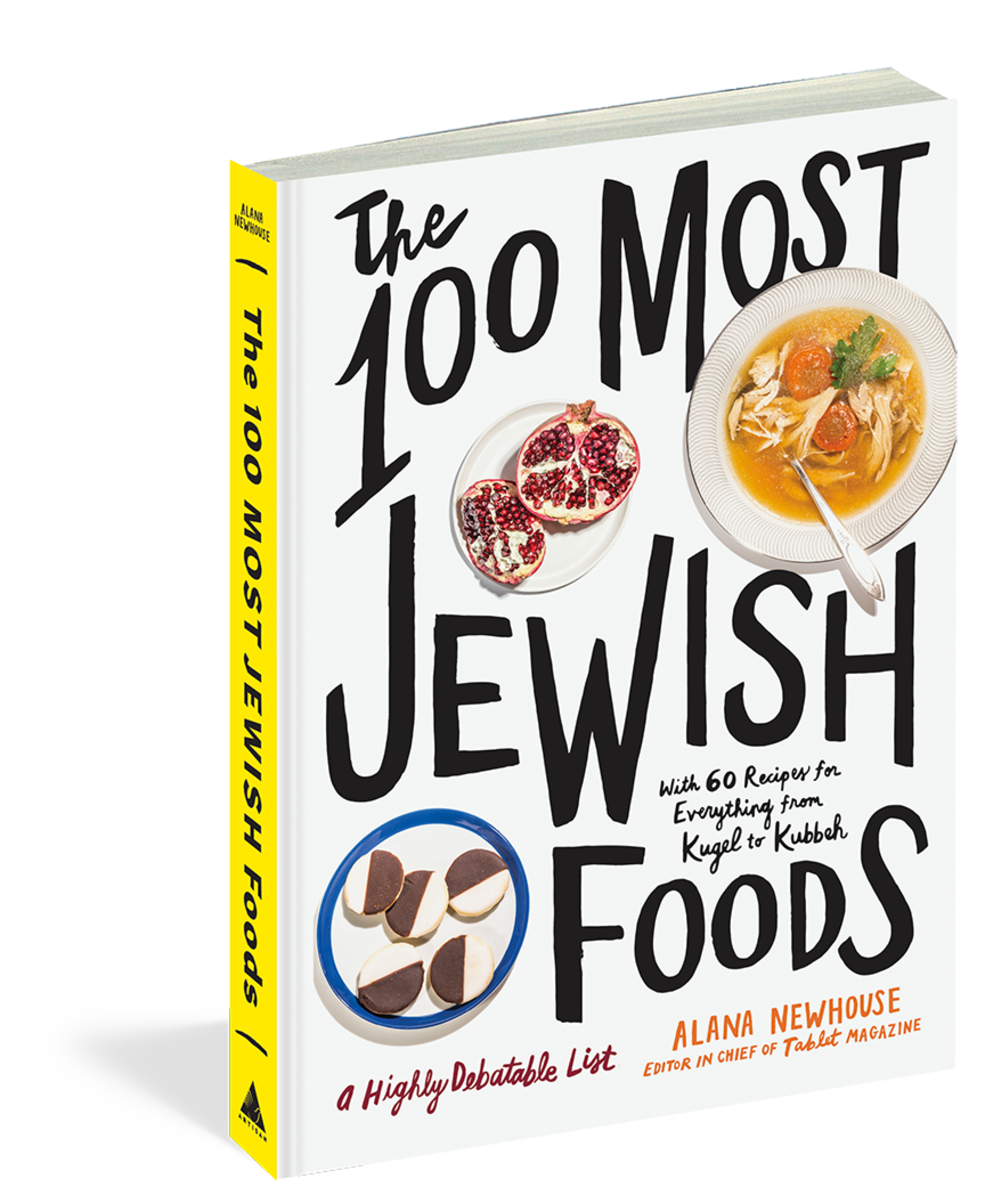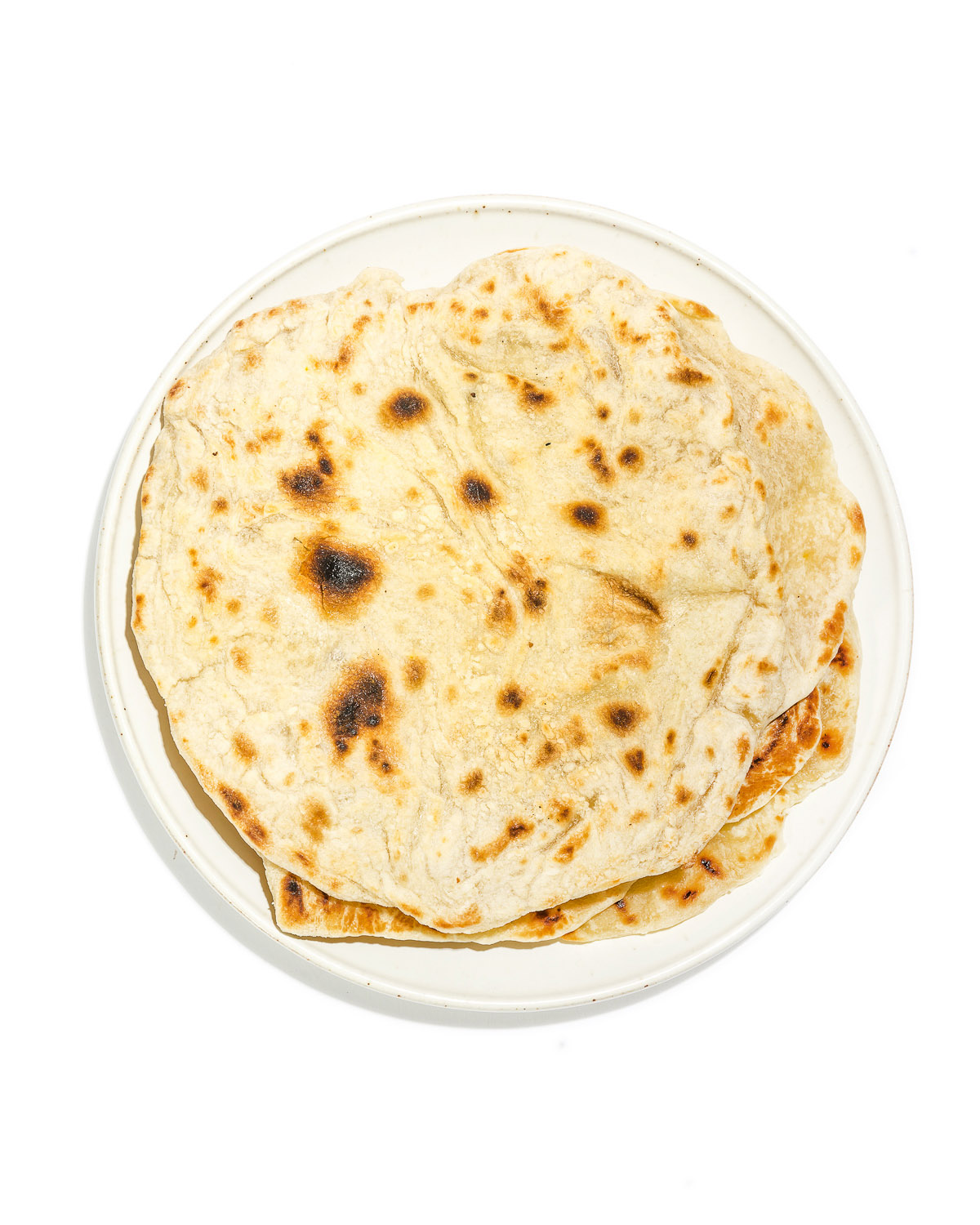Mufleta
The best part of Passover is when it’s over.
When I was growing up, Passover was dominated by my mother’s side of the family, extremely observant Sephardic Jews from Morocco. My mom believed Passover was a holiday absolutely worth staying home from school for, though mostly so we could help clean the house of chametz—she gave my siblings and me toothbrushes to get into the corners of the carpet.
The Seder always started with my grandfather Joseph and his wife Perla—the “Joseph” of my restaurant Joseph Leonard and the “Perla” of my old restaurant Perla Cafe. Everyone wore caftans and jellabas. Each passage of the haggadah was read in Hebrew, with Sephardic rhythms and Arabic-style Moroccan songs. There was a break after every single passage for debate, which took place in several different languages.
We kept kosher, so I always brought my own lunch to school. But my brown-bag lunches that week were different. Even my Jewish friends couldn’t believe it: “Your mom makes you eat matzo all week?” And let me tell you: Eating a peanut butter and jelly or a turkey sandwich with matzo is a hot mess.
But finally, when the sun set on the last day of Passover, it was time for Mimouna—which meant it was time for fun. And not only because I was at that point very sick of matzo. My grandmother would come over, and she and my mom would make all these different Moroccan pastries, filled with dates, prunes, and pistachio. But the highlight of Mimouna was always mufleta.
The best way to describe mufleta is as a thicker crepe or blintz. It’s not quite as thick as naan or as bready as pita. It’s a bit like a tortilla, except puffier. Think of Neapolitan pizza and the blackened, crisp, burnt part under the crust. The perfect mufleta is 30 seconds away from that pizza—right before it turns black.
My mom and my grandmother rolled out the dough, threw it in a cast-iron skillet, and cooked until it blistered. They stacked them like pancakes and covered them in a big kitchen towel for later, when they’d be warm, spongy and a little bit oily from all the butter. That was the secret: all the butter. (Every time you finish cooking one, you add butter, so that when you put the new dough in, it oils up the bottom half.)
And then there were the fillings. The most popular were apple and honey, of course; lavender-infused honey, chamomile-infused honey. Then you’d line the mufleta with apples or bananas. My mom made a chocolate spread similar to Nutella, and I’d spoon that in. And that was the meal. You would just eat sweets for an entire dinner.
I have all these great memories of just stuffing my face with mufleta, and they came rushing back to me last year. My wife and I were invited to eat at Per Se, and the pastry chef, Anna Bolz, wanted to do something to surprise us. She had James Lauer, the general manager at our restaurant Fairfax, get in touch with my sister for recommendations. My sister told James about mufleta. Anna looked it up online, studied the principles of the dish and made an entire mufleta dessert course at Per Se. It was like that scene in Ratatouille, when the critic takes the bite of ratatouille and he gets zapped back to being a kid. That happened to me. I literally cried in the restaurant.
Gabriel Stulman is the founder of Happy Cooking Hospitality.

